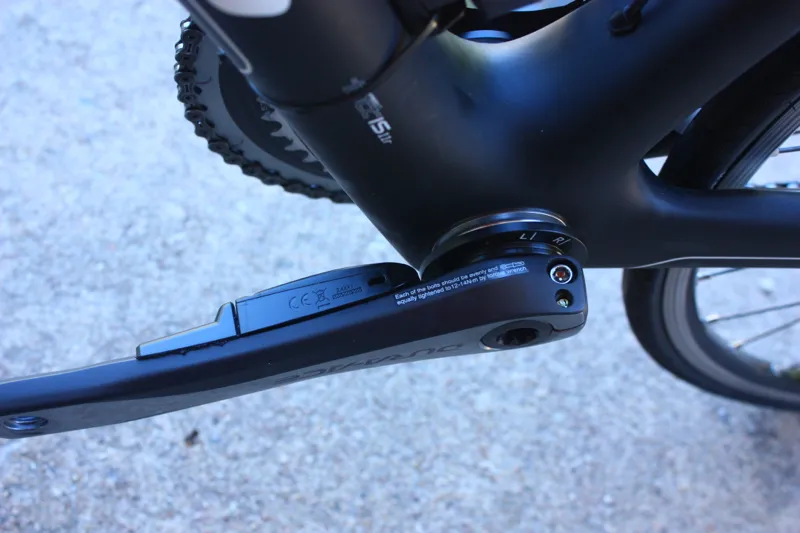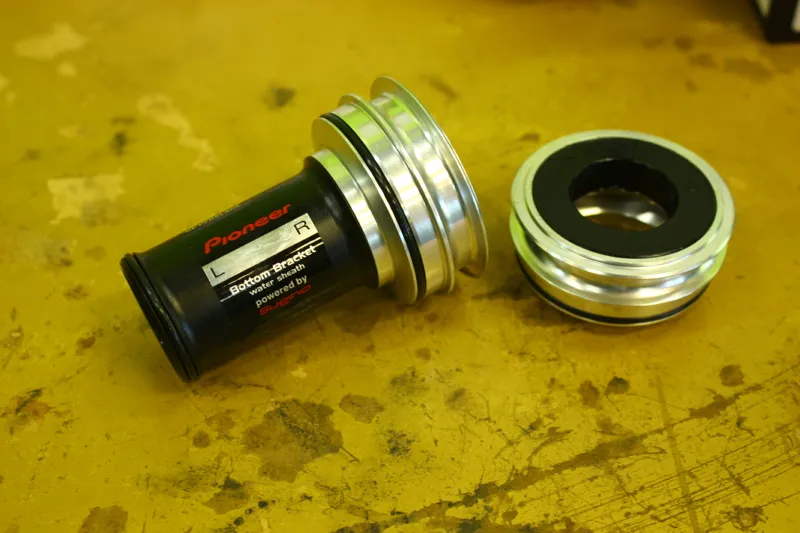After first announcing a new power meter at the 2012 Interbike show, Pioneer is beginning to sell a few Pedaling Monitor System units to US retailers this fall.
For now, the direct measurement power meters work only on Shimano Dura-Ace cranks, and retailers must install the technology onto existing cranks with the tools Pioneer provides. Suggested retail is $1,600 for the SGY-PM900 power meter, which measures left and right power at 12 points along the rotation, and $900 for the SCX-CA900 head unit, which offers a real-time graphic representation of where in the stroke power is being applied. UK distribution and pricing has not been established.
This week BikeRadar received a test unit, which was installed by new Pioneer retailer Pro Peloton in Boulder, Colorado.

Pioneer captures power-to-drag dynamics on each crank
Best known in the US for its audio electronics, Pioneer has moved into the quickly crowding bike power meter market, where longtime players SRM and PowerTap have been joined by Quarq, Stages Cycling, Garmin, Rotor, Power2Max, Look/Polar and Factor.
As with all the aforementioned competitors save Look/Polar, Pioneer uses the ANT+ protocol, which means that most modern wireless computers with power functions (read: Garmin) are compatible.

12-point magnetic rings help capture power at 30-degree intervals in the pedal stroke
Pioneer's main point of differentiation is the ability to measure and display how power is produced, not only with left/right balance as offered by Garmin Vector and Rotor Power, but exactly where power is applied within the stroke of each leg. Presenting this latter information, however, requires use of the Pioneer head unit.
In this visual presentation of the power production cycle, Pioneer is most similar to Shimano's Bikefitting pedal analysis, a fit bike-based system, or CompuTrainer's SpinScan. The big difference of course is that Pioneer's system can be taken out on the open road.
One of the first questions many riders (including us) have is, so what? What exactly is a rider to do with this information? And while the real-time graphic representation is neat, is constantly staring down at the computer like Chris Froome a good idea while riding out on the open roads?
Pioneer contends that, like other power data, the most useful analysis is done post-ride. Pioneer has web-based software, Cyclo-Sphere, that breaks down this information a few ways, including an overlay on a GPS-created route map. Besides noting imbalances, this could also be used to see how the pedal dynamics change on climbs versus flats. Pro Peloton owner Chris Soden is interested to see how this tool could be used in conjunction with professional bike fitting.

The Pioneer system does not include the crank; retailer must affix the meter with epoxy, presses and zip ties
The system adds 145g to a Dura-Ace crank — and the $1,600 does not include the crank itself. A Pioneer bottom bracket is required, as the "magic" of the system, the 12-point magnetic rings, must be mounted to the BB on either side of the frame shell. At 126g, the head unit is not light, but the 2.2in color touchscreen does come with a secure out-front mount (35g). For comparison, a Garmin Edge 810 is 98g, a PowerTap Joule GPS is 69g, and a Bar Fly 2.0 mount is 22g.
In early September, Pioneer began selling with nine dealers in Southern California. But the company hopes to rapidly expand that base. While Pioneer can ship pre-assembled meter to dealers, the plan is to have dealers build the power meters onto their own stock of cranks or that of a customer. After affixing the strain gages to each crank with epoxy and connecting the transmitter to the spider with hooks and two zip ties, the dealer then calibrates the unit before sale.
BikeRadar will be testing the Pioneer power meter over the coming days and reporting back soon with a review.









